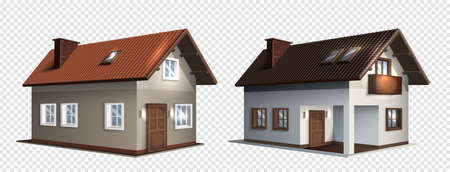1. Understanding the Psychology of Color
Color is more than just a visual element—it has a strong impact on how we feel, behave, and experience our surroundings. In interior design, color plays a key role in creating moods and shaping how people interact with a space. Before diving into why neutral colors are so popular in modern interiors, its important to understand the basics of color psychology.
How Colors Influence Emotions
Different colors can trigger different emotional responses. Bright, bold colors like red or orange can energize a space and stimulate conversation. On the other hand, soft blues and greens tend to have calming effects, making them ideal for bedrooms or relaxation areas.
| Color | Common Emotional Response | Typical Usage in Interior Design |
|---|---|---|
| Red | Energy, passion, urgency | Dining rooms, accent walls |
| Blue | Calmness, trust, serenity | Bedrooms, bathrooms |
| Yellow | Happiness, warmth, optimism | Kitchens, entryways |
| Green | Balance, freshness, growth | Living rooms, offices |
| Purple | Luxe, creativity, mystery | Boutique spaces, bedrooms |
The Unique Role of Neutral Colors
Unlike vibrant hues that evoke strong emotional responses, neutral colors—like white, beige, gray, taupe, and black—create a sense of balance and calm. These shades don’t demand attention but instead act as a subtle backdrop that enhances other elements in the room. This makes them incredibly versatile and timeless in modern interior design.
Main Psychological Effects of Neutral Colors:
- Creams & Beiges: Create warmth and comfort without overwhelming the senses.
- Grays: Offer sophistication and neutrality; great for modern minimalist styles.
- Whites: Represent cleanliness and simplicity; often used to make spaces feel larger and brighter.
- Taupes & Browns: Bring earthiness and grounding energy into a space.
The Foundation for Modern Design Choices
The psychological neutrality of these colors gives designers flexibility. They allow for layering textures, mixing materials like wood and metal, or adding pops of color through furniture or art. Because they don’t overpower the space emotionally, they’re especially effective in open-plan layouts common in American homes today.
2. What Are Neutral Colors in Interior Design?
Neutral colors are a foundational element in modern interior design, especially in American homes where comfort, versatility, and timelessness are key priorities. These colors don’t appear on the color wheel and typically include whites, beiges, grays, taupes, and earth tones. While they may seem subtle or understated at first glance, neutral colors play a powerful role in shaping the mood and functionality of a space.
Understanding the Core Neutral Tones
Neutral colors come in a variety of shades and undertones, allowing homeowners and designers to create depth without overwhelming the senses. Heres a breakdown of common neutral tones:
| Color Category | Description | Popular Uses |
|---|---|---|
| White | Crisp, clean, and bright; ranges from pure white to warm ivory. | Kitchens, bathrooms, ceilings, trim work |
| Beige | Warm and inviting; includes tan, sand, and cream variations. | Living rooms, bedrooms, open-concept spaces |
| Gray | Cool or warm depending on undertones; from soft dove gray to charcoal. | Modern kitchens, home offices, minimalist interiors |
| Earth Tones | Inspired by nature; includes clay, olive, rust, and terracotta. | Accent walls, rustic interiors, transitional spaces |
The Versatility of Neutrals in American Homes
One reason neutral colors remain so popular is their unmatched flexibility. They provide a calm canvas that allows furniture, artwork, or seasonal decor to stand out. Whether youre going for a farmhouse look in Texas or a coastal vibe in California, neutral tones adapt seamlessly to any regional style. In open floor plans commonly found in American homes, neutrals help unify different areas without clashing.
Timeless Appeal Across Styles
The beauty of neutral colors lies in their timeless nature. Trends come and go—bold patterns or bright accent walls may rise and fall—but neutrals stay relevant year after year. They also offer long-term value for homeowners who want their interiors to age gracefully or appeal to future buyers.
Quick Tip:
If you’re unsure about committing to bold colors or frequent updates, starting with a neutral palette provides room for change with minimal effort. Add pops of color through pillows, rugs, or wall art without repainting entire rooms.
Ultimately, understanding what defines neutral colors—and how they function—can guide better design choices that suit both lifestyle needs and aesthetic preferences.

3. Emotional and Psychological Effects of Neutral Palettes
Neutral colors—such as beige, gray, white, taupe, and soft earth tones—are more than just a design trend. These shades play a powerful role in shaping how we feel in a space. In modern interior design, they are often chosen not only for their timeless appeal but also for their emotional impact.
Calm and Serenity
One of the most recognized benefits of neutral palettes is their ability to create a calming environment. Because they lack the intensity of bold colors, neutrals allow our minds to rest. This makes them especially popular in spaces like bedrooms, living rooms, and bathrooms where relaxation is key.
Why Neutrals Feel Calming:
| Neutral Color | Psychological Effect | Common Use |
|---|---|---|
| Soft Beige | Warm and soothing | Living rooms, bedrooms |
| Pale Gray | Peaceful and balanced | Offices, bathrooms |
| Warm White | Clean and serene | Kitchens, entryways |
A Sense of Balance
Neutral tones help balance out other elements in a room. Whether paired with natural textures or bold accent pieces, they provide a visual grounding that keeps the space from feeling overwhelming. This sense of balance contributes to an overall feeling of stability and harmony.
Inviting Warmth Without Overstimulation
While neutral colors are subtle, they can still add warmth when used correctly. Tones like creamy whites or warm grays bring comfort without overstimulating the senses. This is especially important in open-concept homes where flow and cohesion matter across multiple spaces.
Tips for Adding Warmth with Neutrals:
- Layer different shades of the same neutral color to add depth.
- Incorporate natural materials like wood or linen to complement the palette.
- Add lighting with warm undertones to enhance the cozy feel.
The emotional effects of neutral palettes explain why they’ve become staples in modern interiors. They offer comfort without distraction, support well-being through simplicity, and adapt easily to various design styles—all while making a home feel truly livable.
4. The Rise of Minimalism and Its Influence on Color Choices
In recent years, minimalism has become more than just a design trend in the United States—it’s evolved into a lifestyle choice. At the heart of this movement is the idea of “less is more,” where simplicity, functionality, and clarity take center stage. One key element driving this aesthetic is the use of neutral colors.
Neutral tones like white, beige, gray, taupe, and soft earth tones have become staples in minimalist interior design. These colors help create a calming environment that feels open, clean, and uncluttered—something many American homeowners value in today’s fast-paced world.
Why Neutrals Fit So Well with Minimalism
Minimalist interiors prioritize practicality and purpose. Instead of overwhelming the senses with bright or bold hues, neutrals provide a quiet backdrop that allows furniture, textures, and natural light to shine. This approach aligns perfectly with the minimalist goal of promoting mental clarity and reducing distractions at home.
Benefits of Neutral Colors in Minimalist Spaces
| Benefit | Description |
|---|---|
| Visual Clarity | Neutral tones make spaces look clean and organized by eliminating visual noise. |
| Timeless Appeal | These colors don’t go out of style quickly, making them ideal for long-term designs. |
| Flexibility | Neutrals pair well with any decor or accent color, allowing easy updates over time. |
| Calming Atmosphere | The soft tones help reduce stress and promote relaxation at home. |
How Americans Are Using Neutrals at Home
Across the U.S., homeowners are incorporating neutral color schemes in various ways—from all-white kitchens to soft-gray living rooms and beige-toned bedrooms. Neutral walls are often paired with wood accents or black fixtures to add contrast without disrupting the minimalist feel.
This trend isn’t just about aesthetics; it’s also functional. Neutral palettes allow for easier staging when selling a home and appeal to a wide range of buyers due to their universal appeal. Plus, they serve as an ideal foundation for seasonal décor changes without needing a full redesign.
Popular Neutral Combinations in U.S. Minimalist Homes
- White walls + natural wood furniture
- Soft gray sofas + black metal fixtures
- Beige rugs + cream-colored curtains
- Taupe cabinetry + matte white countertops
As minimalism continues to shape how Americans design their homes, neutral colors remain an essential tool for creating serene, stylish spaces that support both function and form.
5. Neutral Colors and Their Impact on Marketability
When it comes to selling or renting a home, first impressions matter. One of the easiest and most effective ways to make a space more appealing to a wide audience is by using neutral colors. These shades—think white, beige, gray, taupe, and soft earth tones—create a clean and welcoming environment that helps potential buyers or renters imagine themselves living in the space.
Why Neutral Colors Work
Neutral tones play a psychological role in how people perceive space. They make rooms feel larger, brighter, and more open. Unlike bold or trendy colors that may turn off some buyers, neutrals provide a blank canvas that appeals to many different tastes and lifestyles.
Benefits of Using Neutrals in Home Interiors
| Benefit | Description |
|---|---|
| Makes Spaces Feel Larger | Light neutrals reflect natural light, creating an airy and open feel. |
| Increases Move-In Readiness | A neutral palette makes the home look clean and updated, reducing the need for immediate changes. |
| Enhances Customization Potential | Buyers can easily visualize adding their own furniture and decor without clashing with existing colors. |
| Appeals to a Broader Audience | Neutral interiors cater to diverse tastes, increasing the pool of interested buyers or renters. |
The Role of Neutrals in Real Estate Staging
Real estate professionals often recommend painting walls in neutral shades before listing a property. This simple update can lead to faster sales and potentially higher offers. Neutral spaces allow prospective buyers to focus on the homes layout and features instead of being distracted by bold color choices.
Commonly Used Neutral Paint Colors
- Sherwin-Williams Agreeable Gray: A warm gray that complements most flooring and furnishings.
- Benjamin Moore White Dove: A soft white perfect for trim, ceilings, or entire rooms.
- Behr Swiss Coffee: A creamy off-white thats cozy but still brightens up spaces.
If youre preparing your home for sale or rent, consider updating the color scheme with neutrals. Its a small investment that can have a big impact on how fast your property moves on the market—and at what price.
6. Tips for Incorporating Neutrals Without Losing Personality
Neutral colors are a staple in modern interior design because of their calming, versatile nature. However, without the right balance, neutral spaces can sometimes feel bland or impersonal. The good news is that you can keep your home feeling warm, inviting, and full of personality with just a few thoughtful design strategies.
Layer Textures for Depth and Warmth
When working with neutral tones like beige, gray, ivory, or taupe, layering different textures adds dimension and interest to a room. Think beyond just fabric—consider wood grains, metals, stone finishes, woven materials, and glass elements. This creates visual depth even when the color palette stays soft and subtle.
Texture Ideas by Surface
| Surface | Texture Options |
|---|---|
| Sofas & Chairs | Linen, velvet, boucle, leather |
| Walls | Matte paint, wallpaper, shiplap panels |
| Floors | Natural wood, sisal rugs, patterned tiles |
| Accessories | Ceramics, woven baskets, brushed metal frames |
Add Accent Pieces to Show Your Style
Accent pieces are where your personality really shines through in a neutral space. These items add pops of color or unique shapes that contrast beautifully against a muted backdrop. Think artwork, throw pillows, vases, books, or even a boldly colored chair.
Accent Piece Ideas That Work With Neutrals
- Artwork: Choose colorful abstract prints or personal photography.
- Pillows & Throws: Go for bold patterns or rich jewel tones.
- Ceramic Vases: Use sculptural shapes or hand-painted finishes.
- Lamps & Lighting: Try statement lighting in brass or black finishes.
Use Light to Enhance Mood and Space
Lighting plays a huge role in how neutrals are perceived. Natural daylight brings out warm undertones in neutral colors, while layered artificial lighting helps create cozy ambiance during evenings. Combine overhead lights with table lamps and wall sconces for flexible lighting throughout the day.
Lighting Tips for Neutral Interiors
| Lighting Type | Purpose |
|---|---|
| Ambient (Ceiling fixtures) | Main source of light; evenly illuminates the room |
| Task (Desk/Reading lamps) | Adds focus for reading or work areas |
| Accent (Wall sconces/LED strips) | Highlights architectural features and adds atmosphere |
Create Contrast With Mixed Materials and Finishes
A great way to avoid monotony in neutral design is by mixing materials and finishes. Pair soft textiles with rough-hewn wood or glossy metals. Use matte walls with shiny accessories to create contrast without relying on bright colors.
Quick Tip:
If your living room has mostly soft beige tones and plush fabrics, try adding a black metal coffee table or brass floor lamp for instant contrast.
Your Home Should Reflect You
The key to making a neutral space feel personal is blending timeless style with meaningful details. Display travel souvenirs on open shelves. Showcase heirloom pieces alongside modern furniture. Even within a calm color palette, your choices tell your story—and thats what makes the space truly yours.


